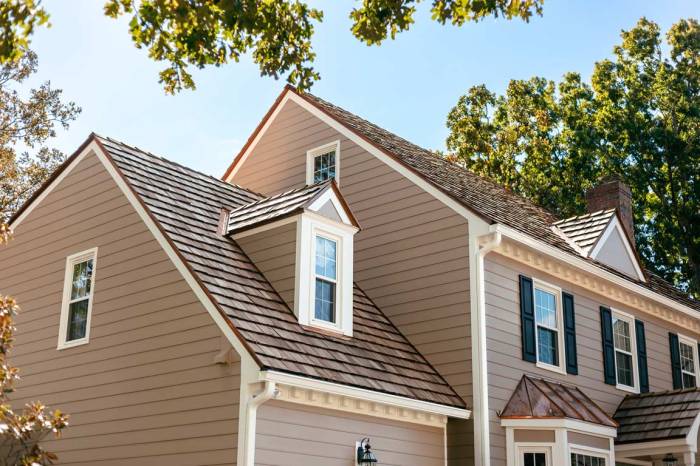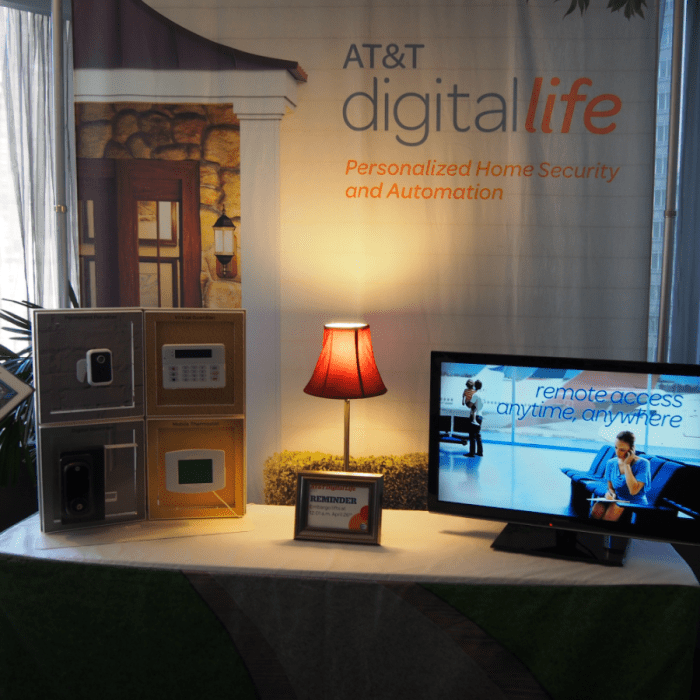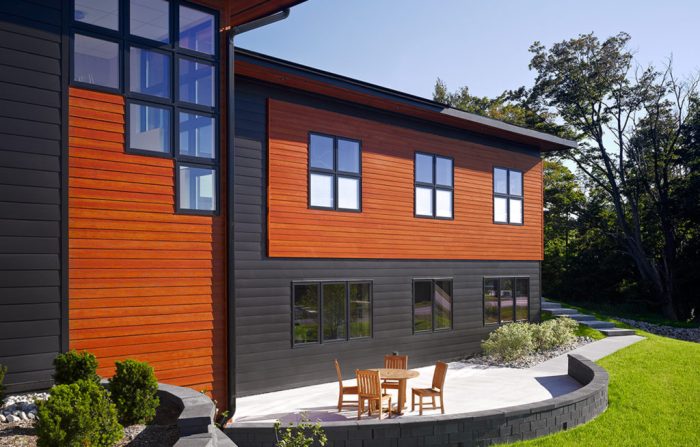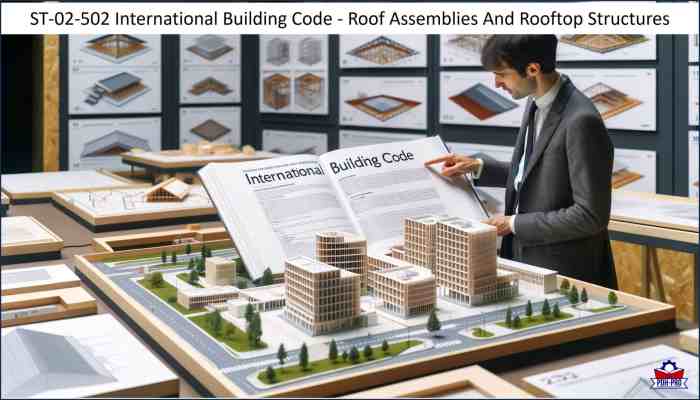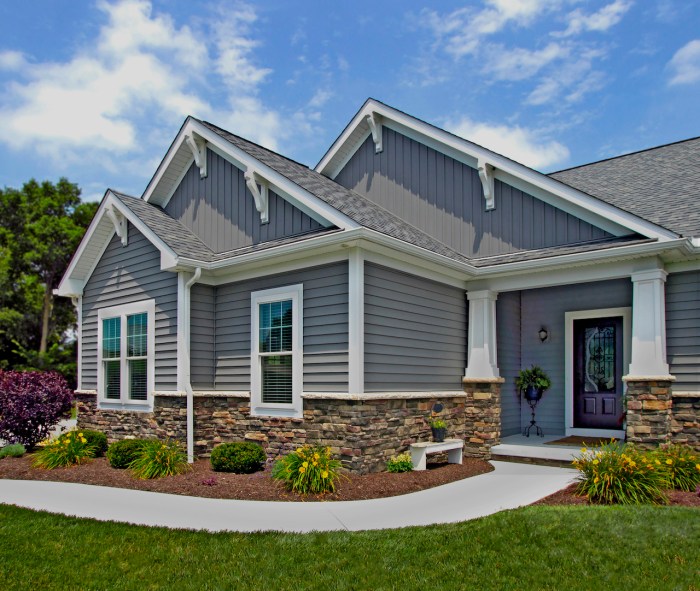Delving into the realm of modern house siding trends, we uncover the evolution of materials and styles that have shaped contemporary architectural design. From vibrant color palettes to sustainable options, the world of siding is ever-changing and full of possibilities.
Overview of Modern House Siding Trends
House siding has come a long way from traditional materials like wood and brick to a wide range of modern options that offer durability, aesthetics, and energy efficiency. In modern architectural design, siding plays a crucial role in shaping the overall look and feel of a home, making it an essential element in both residential and commercial constructions.
Brief History of House Siding Materials and Styles
House siding has evolved over the years, starting with materials like wood and brick that were commonly used in traditional construction. As technology advanced, new materials such as vinyl, fiber cement, metal, and composite siding emerged, offering better durability and aesthetics.
Each material has its unique characteristics and benefits, influencing the choice of siding for modern homes.
Importance of Siding in Modern Architectural Design
In modern architectural design, siding serves as more than just a protective covering for the exterior of a building. It contributes to the overall aesthetic appeal, defining the style and character of the structure. The choice of siding can enhance curb appeal, increase property value, and provide insulation for energy efficiency, making it a key element in the design process.
Key Factors Influencing Modern Siding Choices
- Cost-effectiveness: The initial cost and long-term maintenance expenses play a significant role in the selection of siding materials.
- Durability: Homeowners look for siding materials that can withstand harsh weather conditions and require minimal upkeep over time.
- Aesthetics: The visual appeal of siding, including color, texture, and style, is a crucial factor in enhancing the overall look of a home.
- Energy Efficiency: Siding materials that provide insulation and improve energy efficiency are increasingly popular for eco-conscious homeowners.
- Environmental Impact: Sustainable and eco-friendly siding options are gaining traction as more people prioritize environmentally responsible choices.
Popular Materials for Modern House Siding
When it comes to modern house siding, there are several popular materials to choose from, each with its own unique characteristics and benefits. Let's compare and contrast some of the most common siding materials like vinyl, wood, fiber cement, and metal.
Vinyl Siding
Vinyl siding is a popular choice for its affordability and low maintenance requirements. It is available in a wide range of colors and styles, making it a versatile option for many homeowners. However, vinyl siding may not be as durable as other materials and can crack or fade over time.
Wood Siding
Wood siding offers a natural and timeless look that many homeowners love. It can be painted or stained to match your desired aesthetic and has excellent insulation properties. However, wood siding requires regular maintenance, including painting or staining every few years to protect it from the elements.
Fiber Cement Siding
Fiber cement siding is a durable and low-maintenance option that mimics the look of wood without the same level of upkeep. It is resistant to rot, fire, and pests, making it a long-lasting choice for many homeowners. While fiber cement siding may be more expensive upfront, it can save money on maintenance costs in the long run.
Metal Siding
Metal siding, such as steel or aluminum, offers a modern and sleek appearance to a home. It is highly durable, resistant to rot, and can withstand harsh weather conditions. Metal siding is also eco-friendly and recyclable, making it a sustainable choice for environmentally conscious homeowners.
However, metal siding may dent or scratch more easily than other materials.
Color Trends in Modern House Siding
When it comes to modern house siding, color plays a crucial role in achieving the desired aesthetic and curb appeal. Homeowners are increasingly turning to contemporary color palettes to make a statement and enhance the overall look of their homes.
Popular Color Palettes for Modern Homes
- Neutral Tones: Shades of gray, beige, and white are timeless choices that create a clean and sophisticated look for modern homes.
- Bold and Vibrant Colors: Some homeowners opt for bold colors like navy blue, forest green, or even black to add a modern and striking touch to their exteriors.
- Earth Tones: Warm and inviting colors inspired by nature, such as terracotta, olive green, and mustard yellow, are gaining popularity for a more organic feel.
Influence of Color Psychology in Siding Choices
- Color psychology plays a significant role in influencing our emotions and perceptions. For example, blue hues can evoke a sense of calm and serenity, while red tones may create a feeling of energy and excitement.
- When selecting a siding color, homeowners should consider the desired mood and atmosphere they want to create for their homes. It's essential to choose a color that resonates with the architectural style and complements the surroundings.
Tips for Selecting the Right Siding Color
- Consider the architectural style of your home: Different architectural styles may lend themselves better to specific color palettes. For example, a modern minimalist design may benefit from a monochromatic color scheme, while a traditional colonial home could look stunning in classic white or pastel hues.
- Take into account the landscaping and surroundings: The color of your siding should harmonize with the natural elements around your home, such as trees, gardens, and the overall environment. This will create a cohesive and visually appealing exterior.
- Test samples in different lighting conditions: Colors can appear different depending on the lighting conditions, so it's essential to test out siding samples in natural daylight and artificial light to ensure you're happy with the final look.
Textures and Patterns in Modern House Siding
Texture and patterns play a crucial role in modern house siding design, adding depth, visual interest, and personality to a home's exterior. By exploring trending textures and patterns, homeowners can create a unique and stylish look that enhances the overall aesthetic appeal of their property.
Trending Textures and Patterns
- Wood Grain Texture: Emulating the look of natural wood, this texture adds warmth and character to modern homes. It provides a timeless appeal while requiring less maintenance than real wood.
- Vertical Siding: This pattern is gaining popularity for its contemporary and sleek appearance. Vertical siding can create a sense of height and elegance, making it a popular choice for modern architectural designs.
- Geometric Patterns: Incorporating geometric shapes and patterns into siding design can add a modern and artistic touch to a home's exterior. From simple lines to intricate designs, geometric patterns offer endless creative possibilities.
Role of Texture in Aesthetic Appeal
- Texture adds visual interest: Different textures can create contrast and depth, making the exterior of a home more visually appealing.
- Enhances architectural features: Texture can highlight architectural elements such as windows, doors, and rooflines, adding dimension to the overall design.
- Creates a welcoming atmosphere: The right texture can evoke a sense of warmth and comfort, making the home more inviting and attractive.
Mixing Textures and Patterns
- Balance is key: When mixing textures and patterns, it's important to maintain a balance to avoid overwhelming the design. Combining smooth and textured surfaces can create a harmonious look.
- Consider color contrast: Mixing textures and patterns in similar colors can create a cohesive look, while contrasting colors can make a bold statement. Experimenting with different combinations can help homeowners find the perfect balance.
- Focal points: Use textures and patterns strategically to create focal points on the exterior of the home. This can draw the eye to specific areas and enhance the overall curb appeal.
Sustainable and Eco-Friendly Siding Options
When it comes to siding options for modern homes, sustainability and eco-friendliness are becoming increasingly important factors. Choosing eco-friendly siding materials not only helps in reducing the environmental impact but also promotes a healthier living environment. Let's explore some of the sustainable siding options available today.
Recycled Materials
- Using recycled materials such as reclaimed wood, recycled metal, or plastic composites can be a great eco-friendly siding option. These materials help in reducing waste and energy consumption during the production process.
- Recycled materials often have unique textures and patterns, adding a distinct character to the exterior of the house.
Natural Wood Siding
- Natural wood siding sourced from sustainable forests is another eco-friendly option. Opting for FSC-certified wood ensures that the wood is harvested responsibly without causing deforestation.
- Wood siding can be treated with eco-friendly finishes and stains to enhance durability and longevity, without compromising on sustainability.
Fiber Cement Siding
- Fiber cement siding is a durable and low-maintenance option that is made from a blend of cement, sand, and cellulose fibers. It is fire-resistant, rot-proof, and termite-resistant, making it a sustainable choice for modern homes.
- Manufacturers are now offering fiber cement siding with eco-friendly additives and manufacturing processes, further reducing its environmental impact.
Epilogue
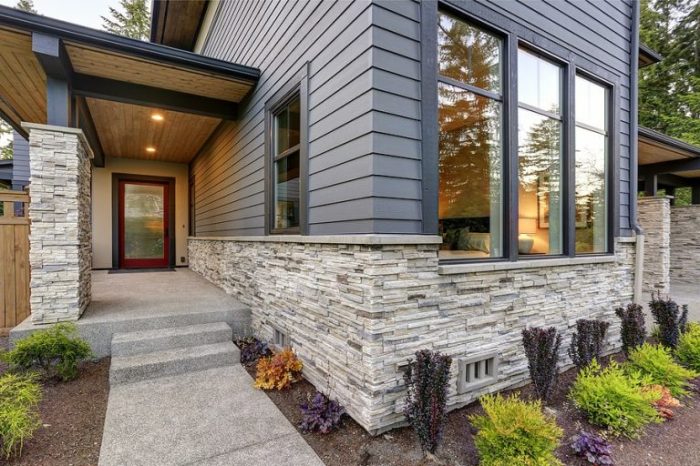
As we wrap up our exploration of modern house siding trends, it becomes evident that the choices available are as diverse as the homes they adorn. Whether opting for eco-friendly options or experimenting with textures, the world of siding offers endless opportunities for homeowners to express their style and values.
FAQ Compilation
What are some key factors influencing modern siding choices?
Factors such as durability, maintenance requirements, and environmental impact play a significant role in modern siding choices.
How can color psychology influence siding choices?
Color psychology can impact the mood and perception of a home, influencing choices for siding colors that resonate with homeowners.
What are some innovative approaches to eco-conscious siding designs?
Innovative approaches include using recycled materials, implementing energy-efficient designs, and exploring sustainable siding options.


